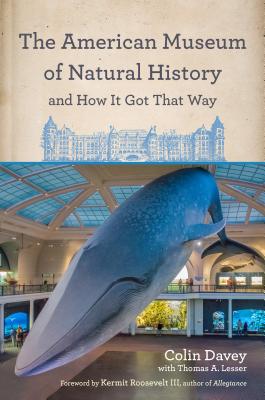The American Museum of Natural History, including the Hayden Planetarium, is one of New York City’s most beloved institutions, and one of the largest and most celebrated museums in the world. Since 1869, generations of New Yorkers and tourists of all ages have been educated and entertained here. Located across from Central Park, the sprawling museum structure, consisting of many separate buildings spanning four city blocks, is a fascinating conglomeration of diverse architectural styles built up over a period of 150 years. The first book to tell the history of the museum from the point of view of these buildings, The American Museum of Natural History and How it Got That Way reveals the many changes that influenced its building and design, contextualizes them within American history and the history of science, and teases out their origins in the dealings and personalities of nineteenth- and twentieth-century New York City.
Author Colin Davey spent much of his childhood literally and figuratively lost in the museum’s labyrinthine hallways. The physical building represents a massive, multi-generational effort that started and stopped, stalled and sped up, according to the vicissitudes of backroom deals, personal agendas, shortages due to two world wars, and Cold War propaganda needs. Chronicling its evolution over the years—from the purchase of a desolate, rocky, hilly, swampy site, known as Manhattan Square to present day—the book includes some of the most important and colorful characters in the city’s history, including museum founder Albert Bickmore, the notoriously and epically corrupt and powerful William “Boss” Tweed, Andrew Haswell Green, a founder of Central Park, the American Museum of Natural History and the “Father of New York City,” as well as American presidents, New York power brokers, polar and African explorers, and German rocket scientists.
The first book to cover the history of the museum’s astronomy department and Hayden Planetarium, The American Museum of Natural History and How it Got That Way features a detailed tour through the old Hayden Planetarium (demolished in 1997 to make way for the Rose Center) through archival research and richly illustrated with period photos. A foreword by Neil DeGrasse Tyson situates the architecture of the physical buildings in the wider story of the museum.











